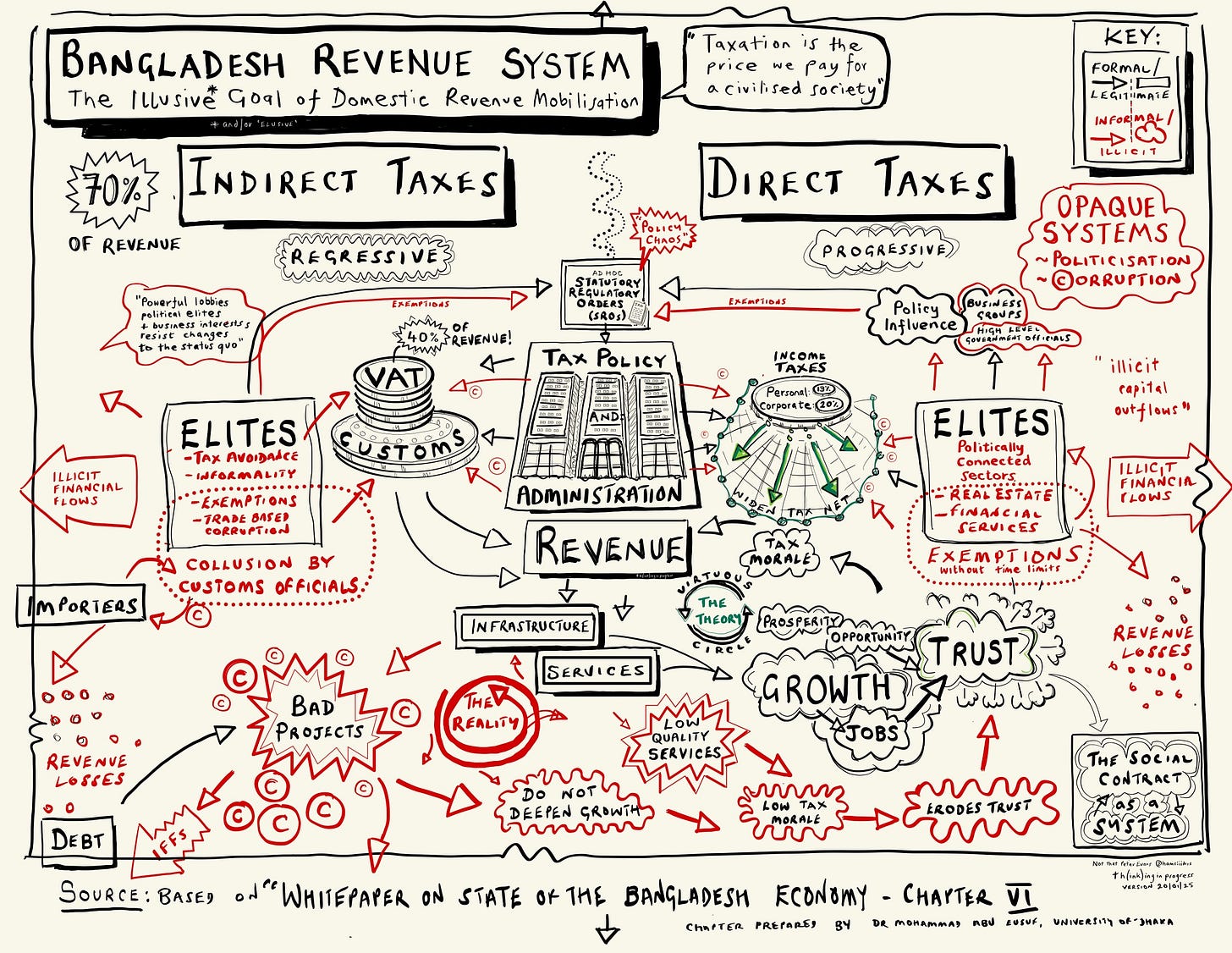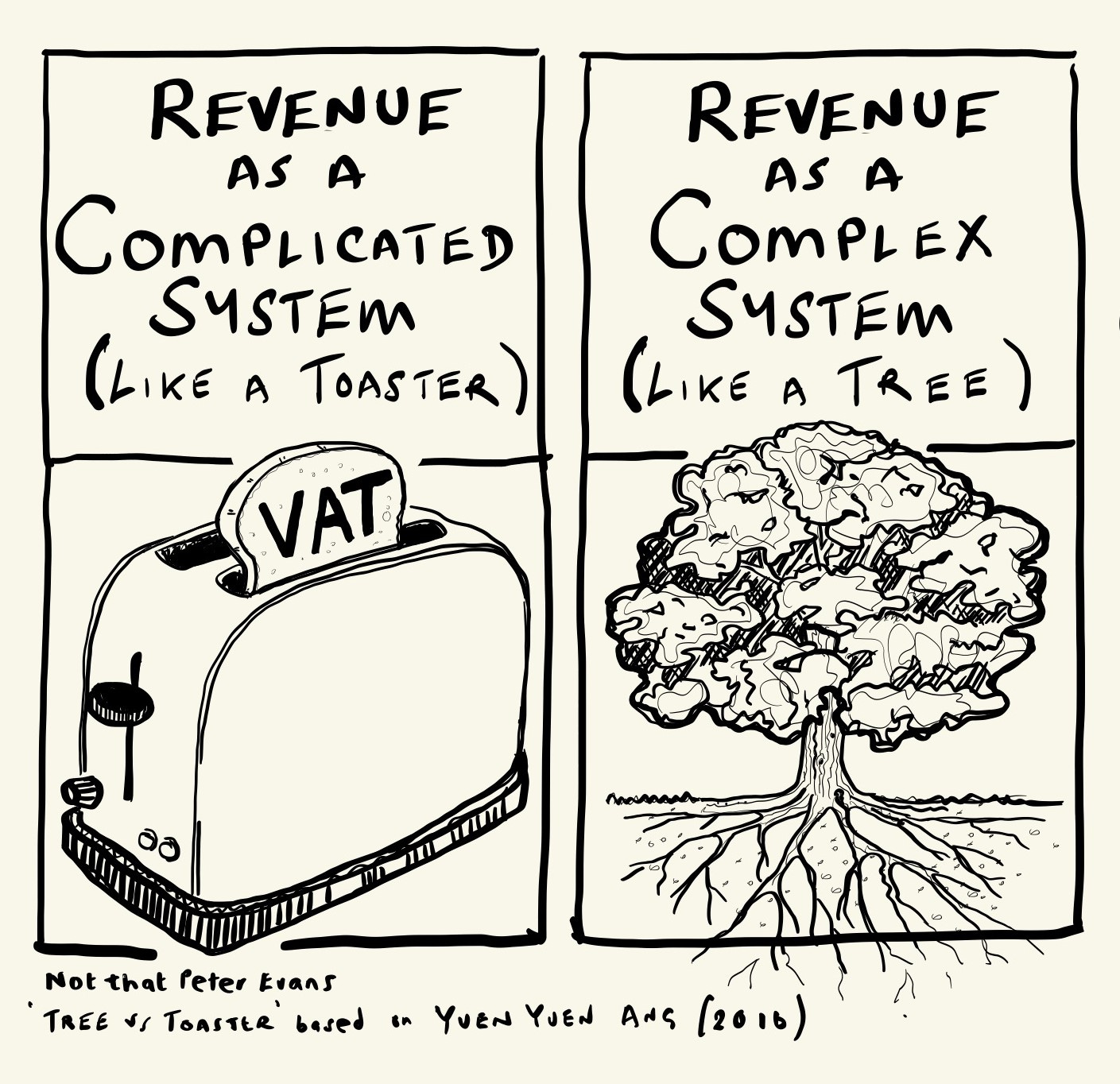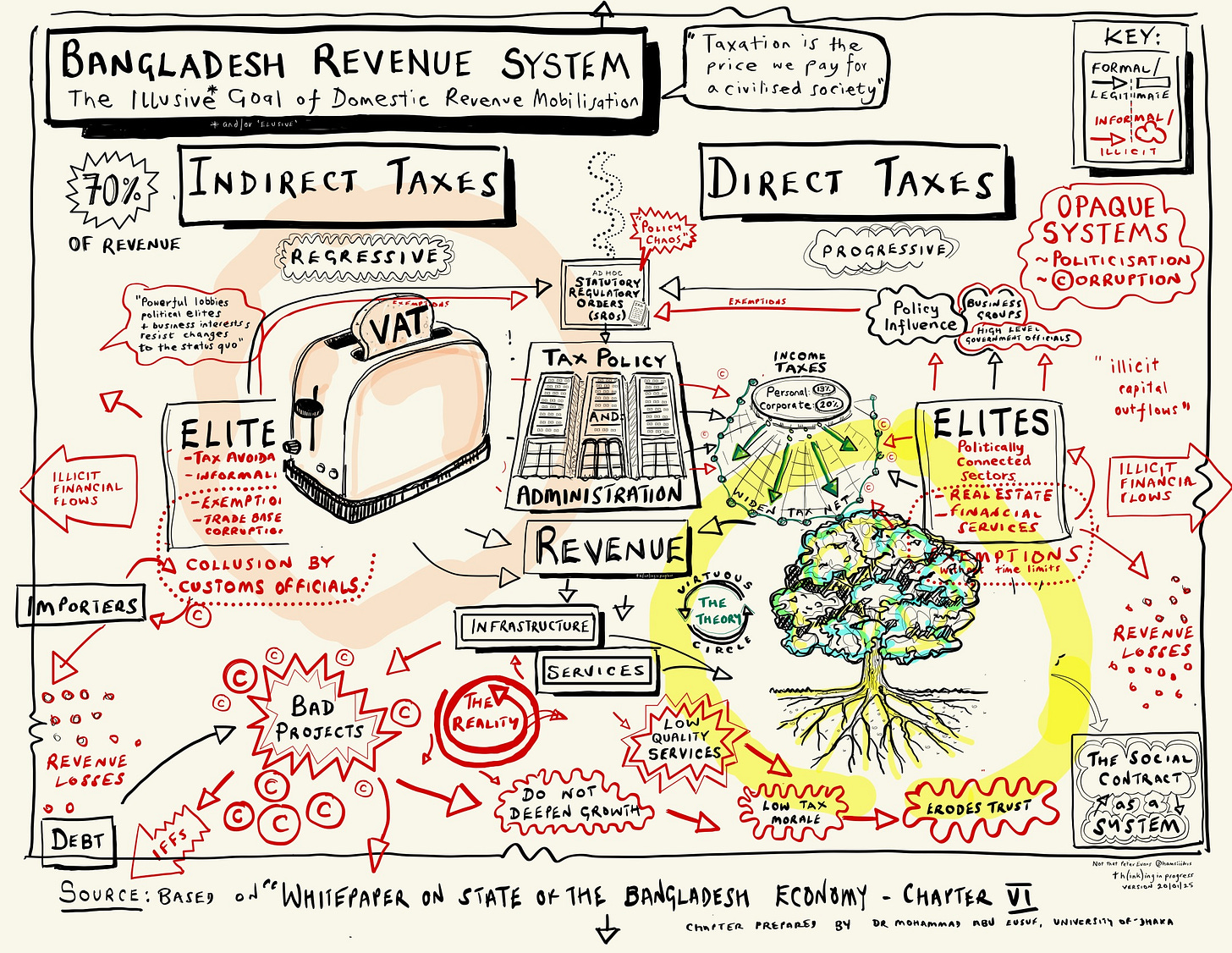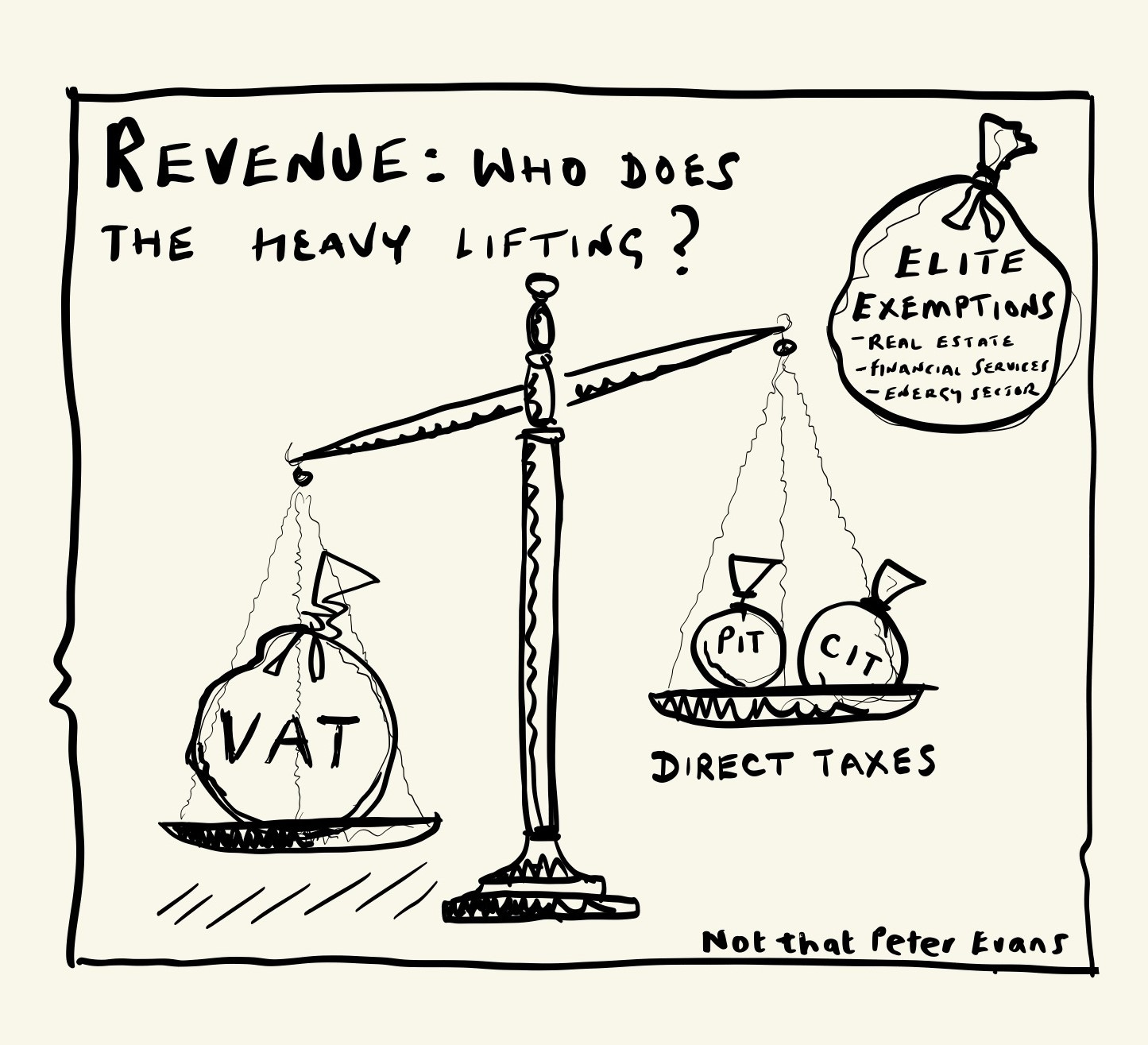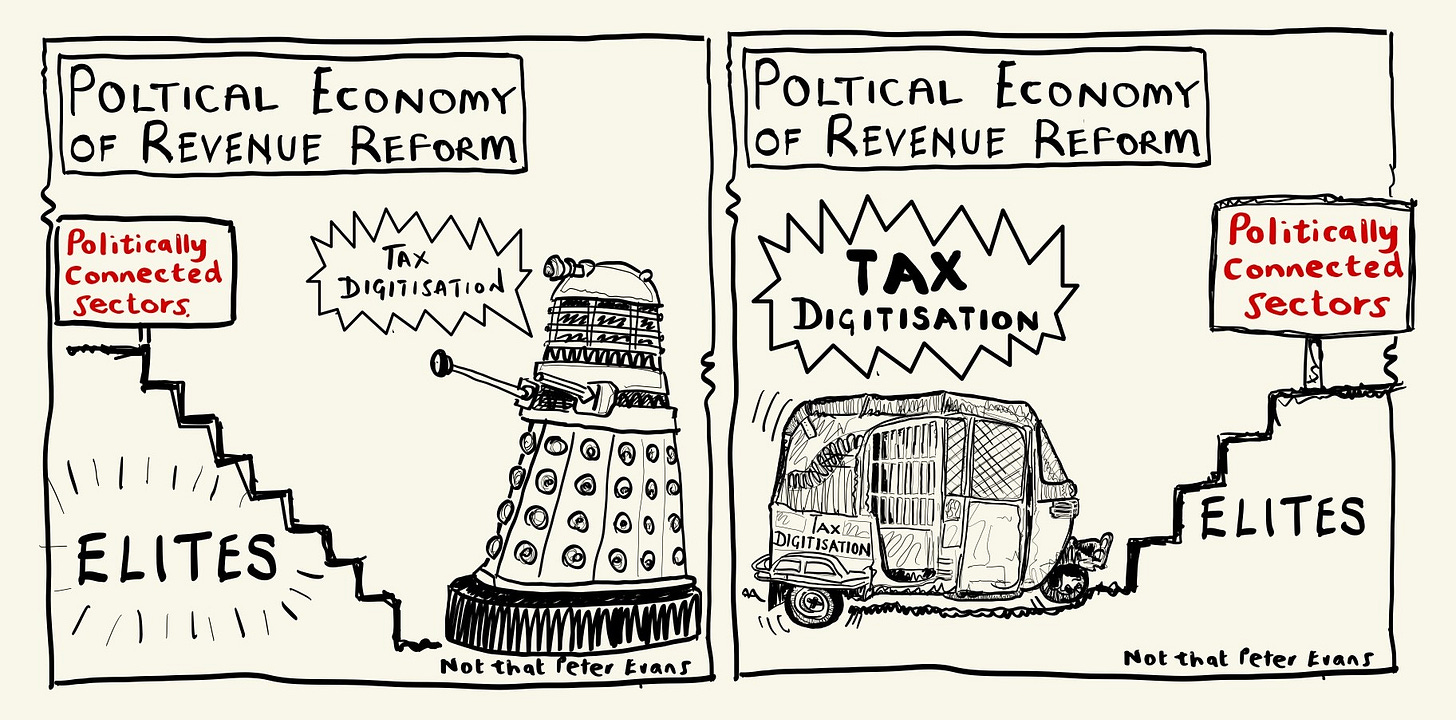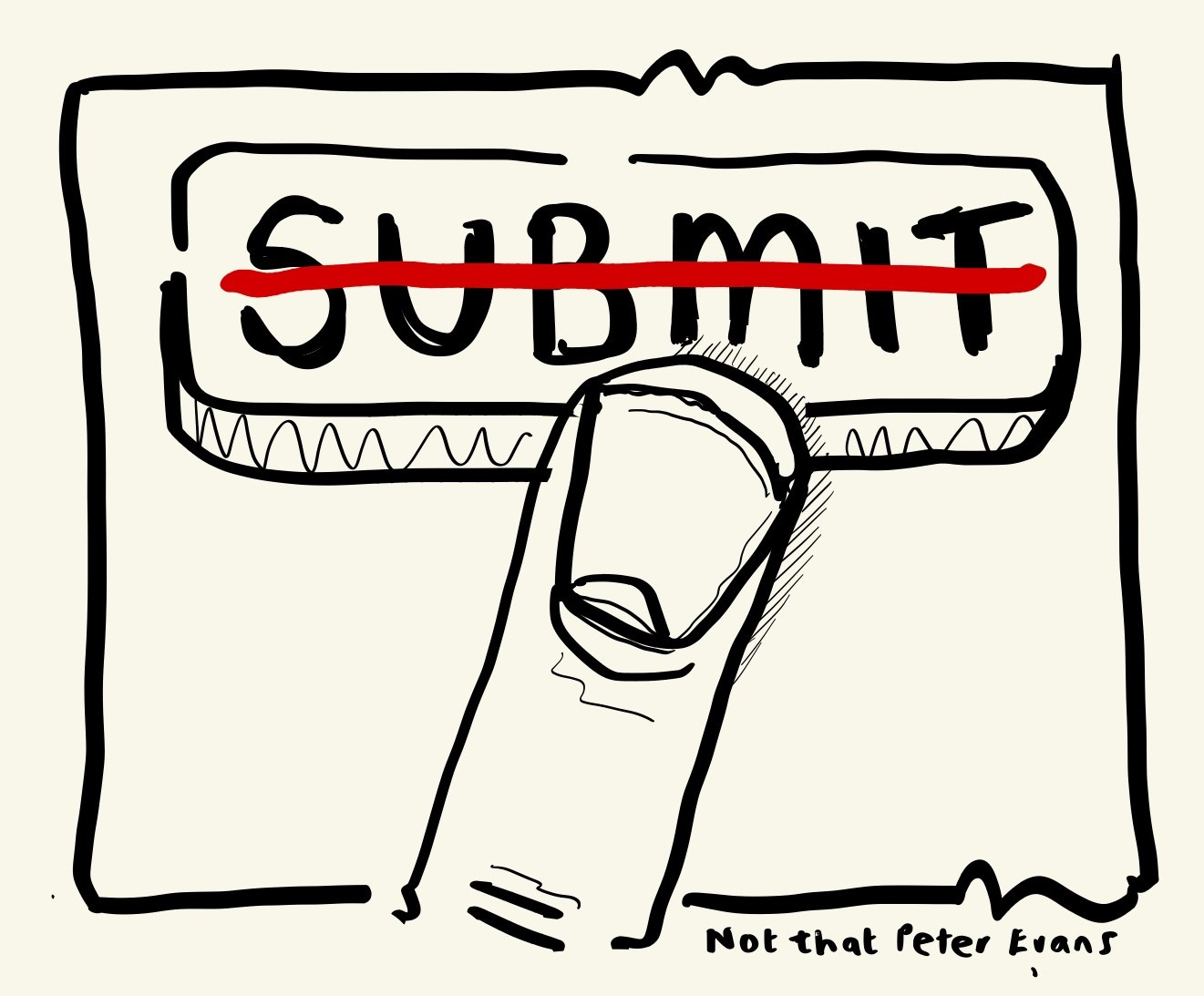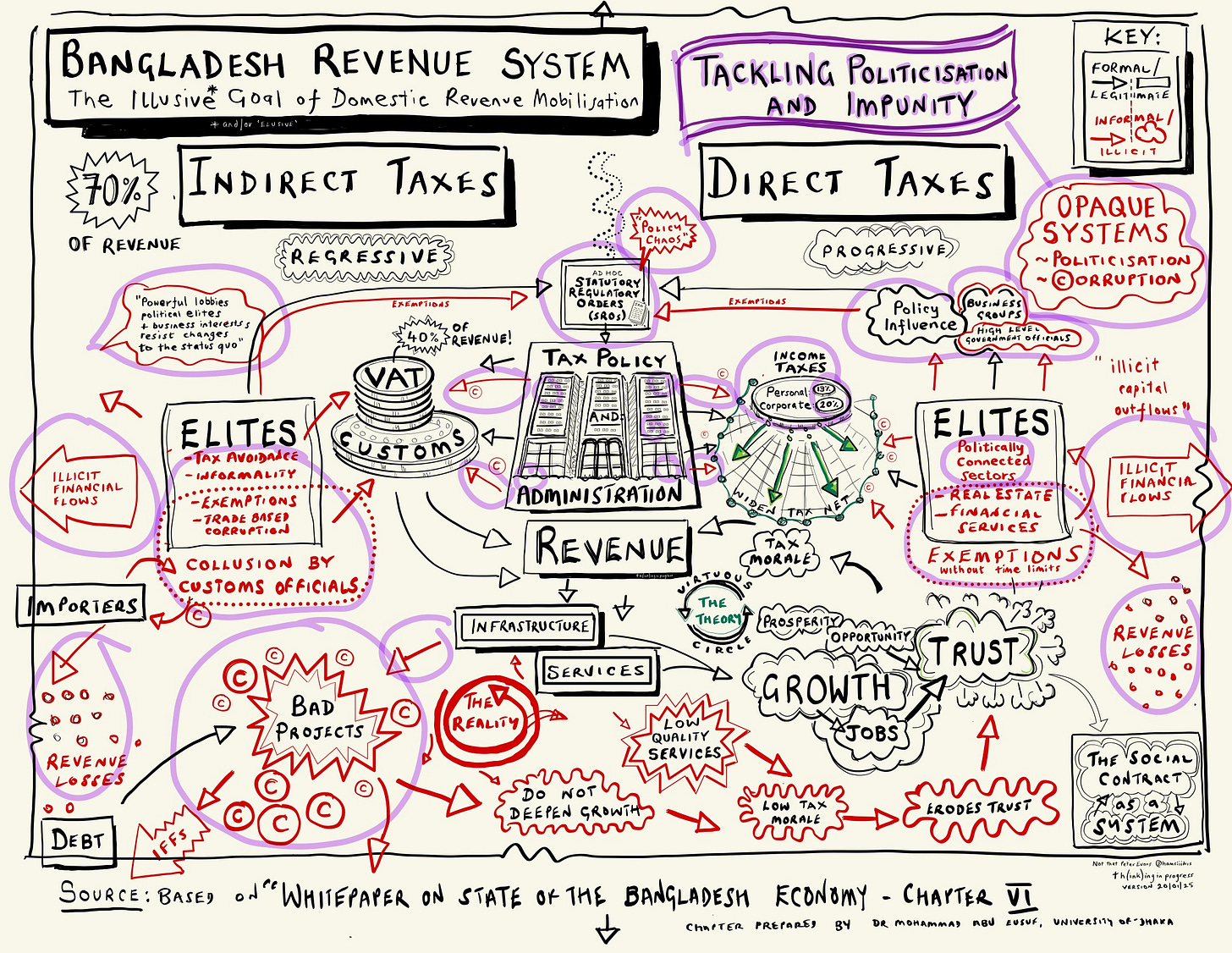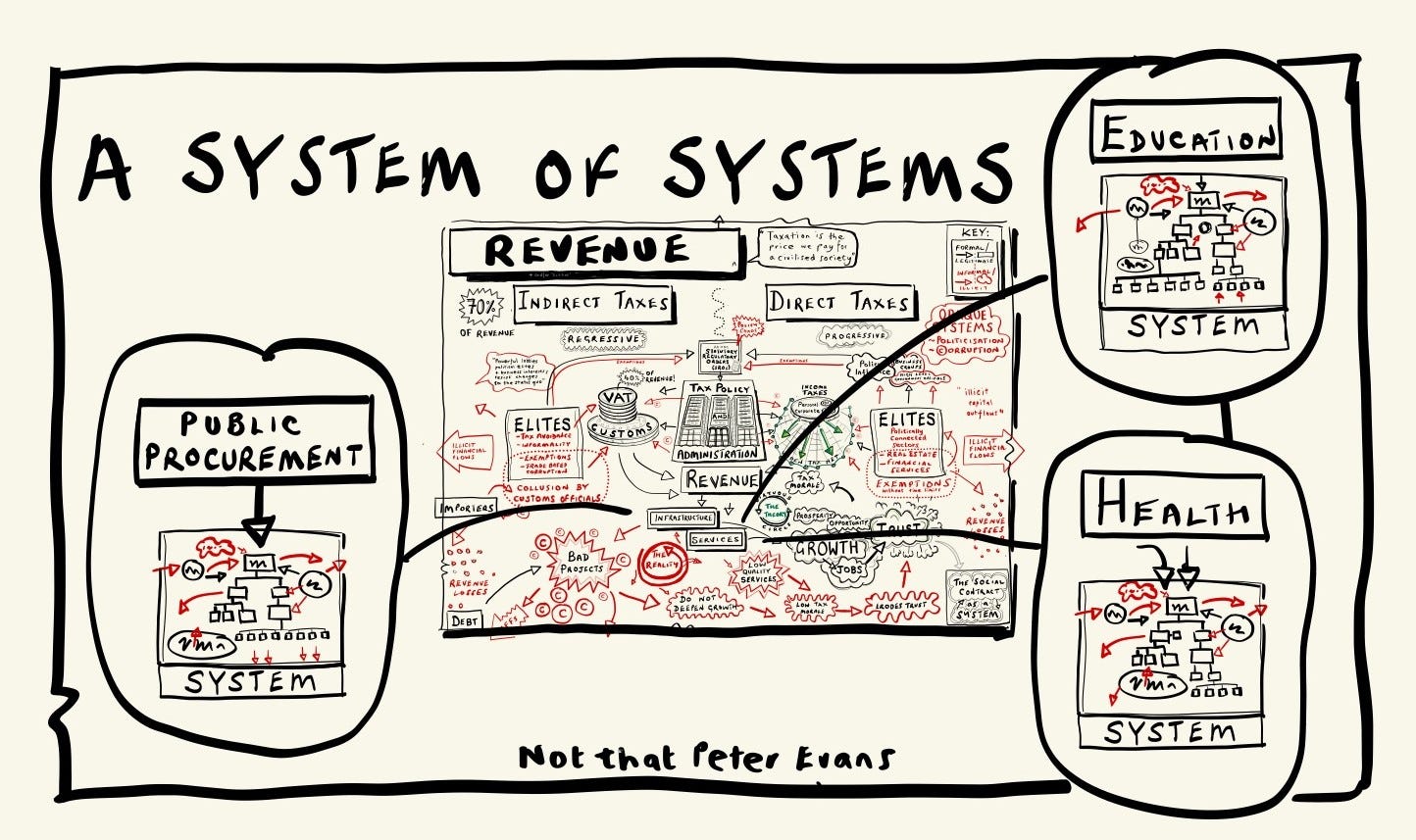Picture this 3: Bangladesh Revenue System
Does drawing a complex system make it easier to understand, and act upon? After Kenya and Sri Lanka, here is a new system drawing of Bangladesh's revenue system. Th(ink)ing in progress...
Part I: A new fiscal picture
Previously: Regular readers will know my shtick; I take someone else’s expert analysis and draw it out as a system - so from a detailed, unavoidably linear text that describes a complex system, to a hand drawn1 representation of that system - or systems.
After system drawings of the Kenya crisis, and the Sri Lankan fiscal system, my next focus is a country close to my heart - Bangladesh.
This picture: I’ve been working lately on governance and the political economy of post revolution Bangladesh - including thinking about the past, present, and future of the revenue system. The systems drawing is a spin-off of this work2.
Source material: My source material is the (very good) chapter on revenue in the Interim Government’s White Paper on the State of Bangladesh’s Economy. The chapter’s author is Dr. Mohammad Abu Eusuf, Professor and Former Chair in the Department of Development Studies at the University of Dhaka.
The chapter is a detailed account of the revenue system, performance, failings, and recommendations for the road(s) ahead. It mixes familiar economic data and tax expertise with institutional analysis, and some very frank political economy analysis - bad elites, policy capture, the politically connected sectors that avoided tax, systems of corruption and collusion, and how previous technical reform efforts have been systematically undermined by those working in the revenue system and their political patrons.
It lets some ‘genies out of bottles’, and gets some ‘skeletons out of cupboards’, which was difficult, perhaps impossible, and definitely risky, under the Awami League regime.
Here is my system drawing:
Caveats: The chapter is very good but my drawing is work in progress. Any failings, mistakes or misrepresentations are my own. The drawing is not comprehensive - for example it lacks detail on tax administration. I tried to add this but it got too visually complex (darn you, 2D). I therefore plan to use this ‘basic’ system diagram to develop further ‘layers’ of system texture, relationships, and politics by drawing these over the top. Tax administration included.
User guide: I invite you to look at the drawing on your biggest screen, zoom in, and trace a critical finger over some of the components and the relationships drawn between. The black arrows are formal, official. The red arrows and boxes are informal, illicit, generally negative. Informal does not always mean bad.
The goal of this blog is to share this system drawing and seek feedback. Therefore any comments are very welcome, including on mistakes or mis-representations, or ideas for other systems that could usefully be drawn.
Or why not commission some system pictures…?
PART II: some reflections on this system
For those who want to get deeper into this visual system thinking, here are a few ‘stylised reflections’ about the Bangladesh revenue system - and how a systems approach might help us make revenue work better for all.
SYSTEMS 1. Complicated like a toaster or a complex like a tree?
As I read the Whitepaper and started drawing, Bangladesh’s media reported a hike in VAT to help fill the financial hole. They connected this to directions from the IMF.
The Whitepaper and the system diagram already describe a very imbalanced revenue system that depends heavily on regressive indirect taxes (the left half) - particularly VAT - that hit poor people hard.
At the same time, politically connected sectors - real estate, financial services, and energy - have enjoyed wide ranging and enduring tax exemptions, and many elite groups avoid personal and corporate income tax - they stay out of the net, or if in the net, they don’t file returns or pay tax.
Increasing VAT would double down on inequality for the sake of some quick cash.
In system terms this reminds me of Yuen Yuen Ang’s framing of ‘tree or toaster?’3.
Ang contrasts ‘complex’ versus ‘complicated’ in relation to corruption and growth in China but I think it is a useful way of thinking about any system. A tree is complex (a dynamic, adaptive system producing a range of outputs and outcomes, both intended and unintended, and existing within a complex environment - air, soil, minerals, water, sun, insects etc) while a toaster is complicated (many specific parts connected in a specific order to deliver one output).
I think that Bangladesh’s revenue challenge is to create conditions for a tree to flourish year on year, not follow instructions, press a button, and do one thing well - make toast4. Or collect VAT.
Beyond Ang’s Tree or Toaster, my other go-to explanation of systems thinking is this short piece (by Vishvapani, less than 3 mins of audio, or a short read) about Welsh food systems, and how systems thinking echoes Buddhist philosophy:
When people go hungry we need to respond immediately; but if we want to effect change we must look at the system that created the problems and ask fundamental questions about its structure. An increasingly influential approach is known as Systems Thinking, which looks at the biosphere, the economy and food supply as vast systems made up of smaller sub-systems. These systems operate in distinctive ways, and terms like feedback loops and tipping points, come from the world of systems thinking.
[…] if you want to be happy, you can’t force happiness to happen, but you can patiently cultivate the conditions from which it emerges. A systems thinker would say that this makes happiness ‘an emergent property’, […] happiness ‘arises in dependence upon conditions.’
The same principle of ‘dependent arising’ applies to any outcome we desire. The mistake is to regard something like the food system as a machine we can control. Perhaps it’s more like a living organism. […] approaching it with wisdom and care means recognising its complexity, and patiently fostering the conditions that will make it strong and resilient.
If you see the revenue system as more like a tree than a toaster, then a lot of the focus is on nurturing the conditions and emergent properties in the bottom right quadrant of the system - growth, jobs, opportunity, prosperity, tax morale, and trust. Trust that taxes paid will be used wisely and carefully by the government. Nurturing the ‘social contract’.
If you think like a toaster you will be looking for a button to push, like VAT.
Systems 2. Revenue balance - who does the heavy lifting?
In talking about political economy and systems we often talk about equilibria - in political settlements, in elite bargains, in supply and demand. Dynamic systems in balance. Well, Bangladesh’s revenue system is extremely out of balance:
Systems 3: Technical versus political (when in doubt - try and digitise your way out?)
The Whitepaper chapter describes efforts to digitise Bangladesh’s revenue system, international partners’ enthusiasm for digitisation and automation, and the vested interests that mobilised against allowing this to happen.
“NBR had a rather reluctant approach to development partners’ support to digitalisation”.
Here is my summary5 of what the Whitepaper says about this:
The political barriers described in the Whitepaper stem from entrenched interests and governance challenges, with politically connected elites resisting reforms that threaten their ability to exploit manual processes for tax evasion, exemptions, and corruption. They also lobby against transparency-enhancing measures.
Successive governments have prioritized short-term political gains over long-term reforms, and digitization has been seen as politically risky, as it could expose systemic corruption, inefficiencies, and high-profile tax evasion. This fear of exposure discourages policymakers from fully embracing digital transformation.
Institutional entrenchment within the National Board of Revenue (NBR) and other agencies also creates resistance. Politically appointed officials fear losing discretionary power and illegal income streams associated with manual systems. Weak governance and accountability, driven by politicized institutions, lead to inconsistent implementation and underfunding of digital reforms.
To try and summarise this in a picture I imagined tax digitisation as a ‘Dalek’ which is a TV alien poised to dominate the universe, but which (as many old jokes noted) could not climb stairs. In my mind, elites and politically connected sectors were able to ‘go upstairs’ and so avoid being caught by tax digitisation. However, using Daleks as a metaphor is very UK centric so I redrew this with the small wheeled auto rickshaw of tax digitisation struggling with the same elite staircase:
The hardest button to button: Buried in the Whitepaper (p.108) there is also a stunning tale from the frontlines of digitisation in Bangladesh’s revenue system - something supported, advocated and championed by a range of external actors and tax technical experts:
“During one of the consultations, it was reported that the NBR developed software for the online submission of VAT returns with support from A2I (access to information office), marking a positive step toward reducing the hassle for businesses. However, users encountered a significant issue: one user noted the absence of a "SUBMIT" button, rendering the software ineffective.
This could indicate a fault in the software's design or, more disturbingly, a deliberate attempt by the VAT office to render the software useless in order to profit illegally from the physical submission of VAT returns. The failure to detect this problem or issue an apology by the VAT office strongly suggests corrupt intent within the organisation”.6
(Footnote: a2i is a flagship project at the PM Office and was funded by UNDP).
Systems 4: Impunity, collusion, where to act
As with the Kenya and Sri Lanka diagrams, one motivation for drawing the system was to try and understand how politicisation, policy capture, systemic corruption, and impunity have operated and escalated - and how a strategy might address different parts of this ‘impunity system’, rather than the traditional approach of choosing a single component/function/organisation within a system and focusing on that only - tax digitisation, anti corruption commission, customs etc.
The purple highlights are my very quick effort to start doing this…
Systems 5: A system of systems
Finally, if you draw a system you soon start thinking about sub-systems within it, and also adjacent or boundary systems that interact with it. A system of systems.
I think Bangladesh might benefit from a rolling set of system diagrams, particularly in sectors that have long been the focus of national and international reform efforts and finance, but in which some key constraints - often political - have been extremely enduring.
Health, education, and public procurement would be on my personal priority list. Power sector? Constraints to growth?
Feedback welcome!
I do this by hand - I have tried system software and I don’t like it.
My Christmas project was teaching myself to draw using an Ipad and the Goodnotes app - for personal growth (ha!) but also because my inhouse artist @hamsiiidris has University finals very shortly and needs to focus on revision. I hope that she will still do graphic work with me. This system diagram is mainly by me, though seeking her expert advice, critical feedback. My main quality barrier was my bad handwriting - I worked hard to learn how to letter more clearly. I have always envied primary school teachers.
Features in various books and papers, first in “How China Escaped the Poverty Trap” (2016, Cornell University Press) and more recently in "Adaptive Political Economy: Toward a New Paradigm." World Politics, 2024. Project MUSE, https://dx.doi.org/10.1353/wp.0.a927487
Thank you to the tax expert who said ‘but my toaster has two settings - bread or bagel’.
Confession: the Whitepaper is very long, and I interrogated it using ChatGPT to pull out thematic summaries. It works pretty well when you ask it to extract a theme that is integrated through analysis - such as ‘what does the revenue chapter say were the barriers to digitisation?’. A human then checked this.
This has echoes of an experience from my posting in Dhaka in 2004-7. DFID provided budget support to a range of departments, including the power sector, and the roads and highways department. We also provided Technical Assistance to the same departments, including some support for a new digital system to manage contracts and so make planning and spending more predictable transparent. The new system was complicated and expensive. It had little impact and rapidly broke down, reportedly because officials were concerned that it would challenge their control, personal discretion, and vested interests, and expose past misdeeds. Therefore they overloaded it with bad data, and therefore it became unable to produce anything useful.




